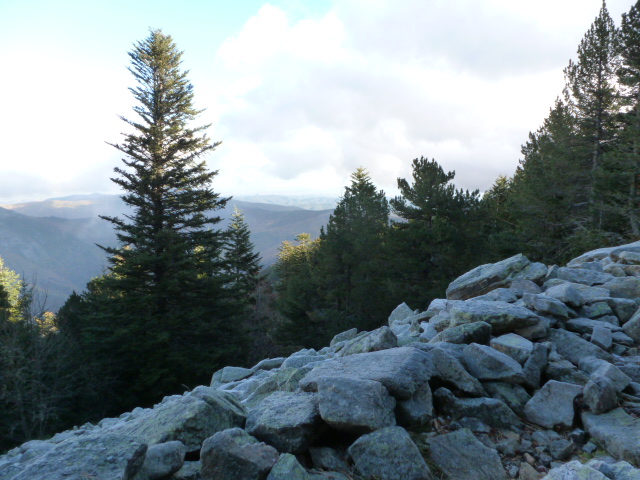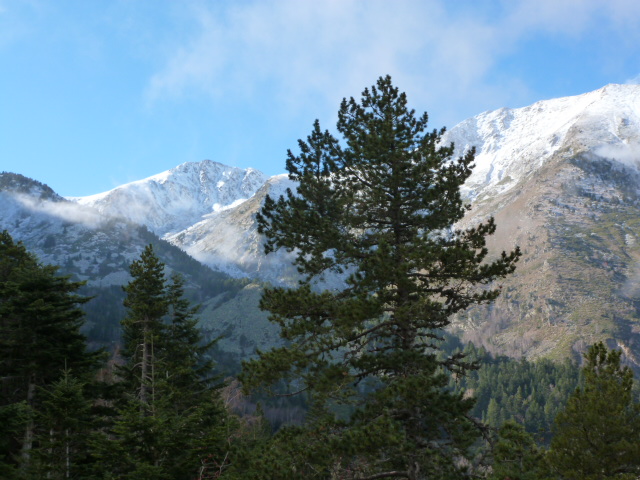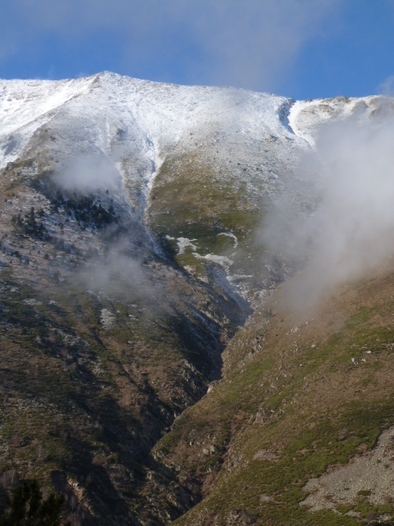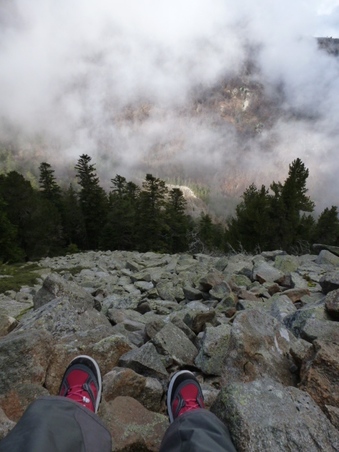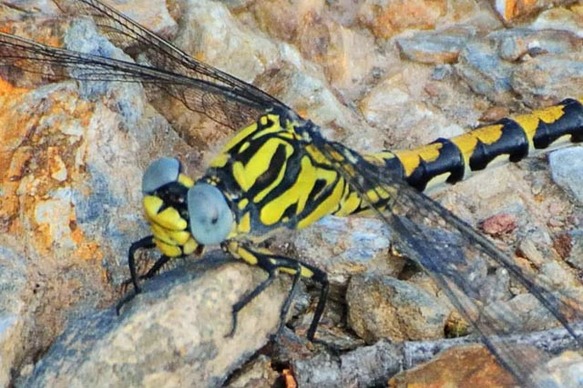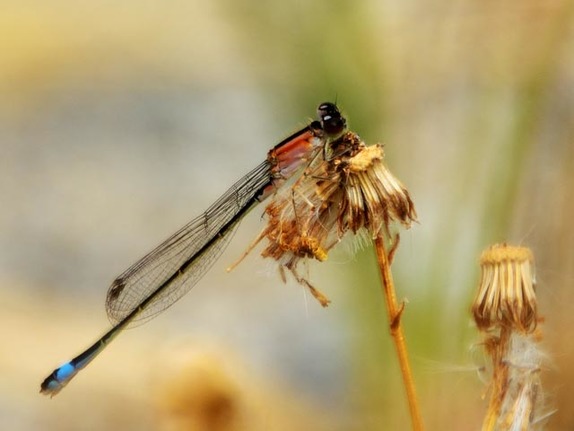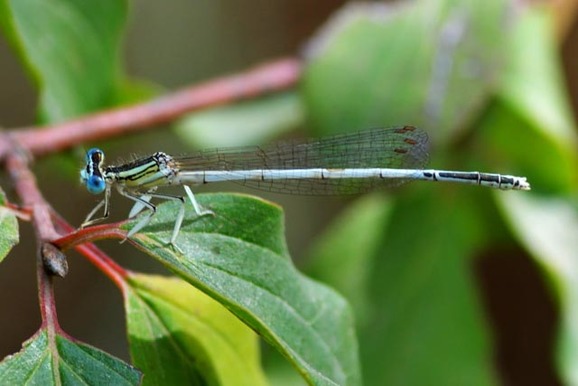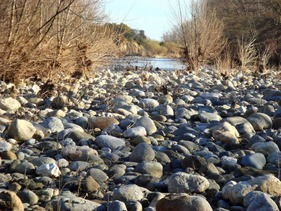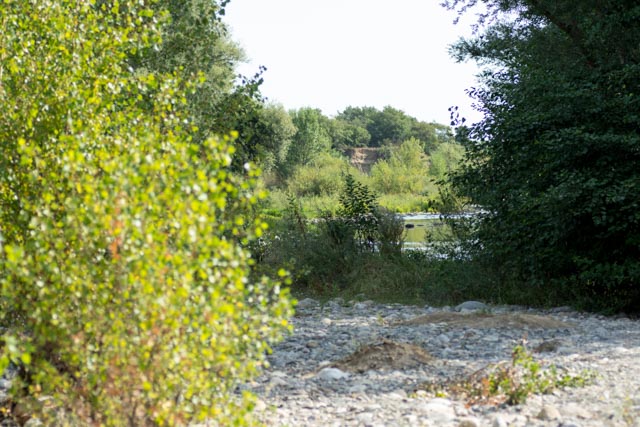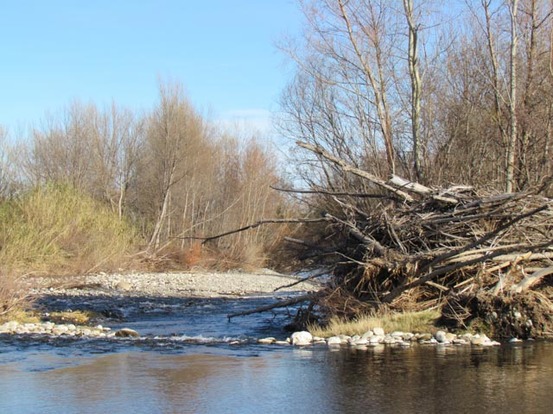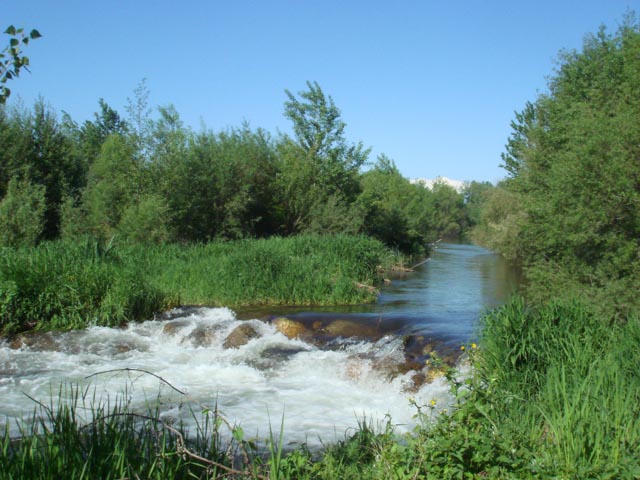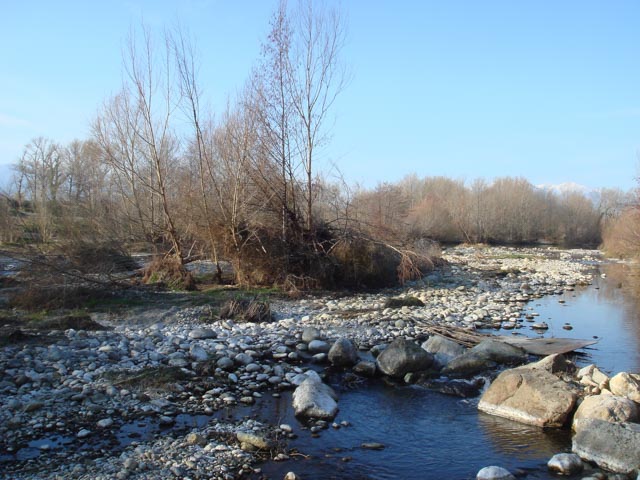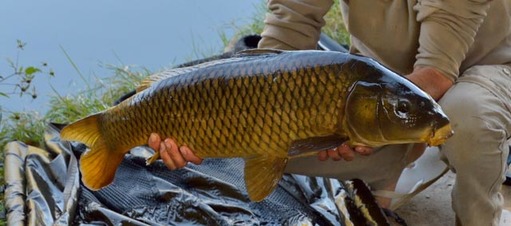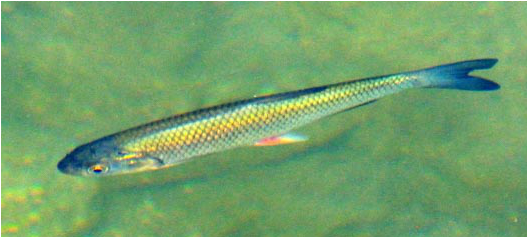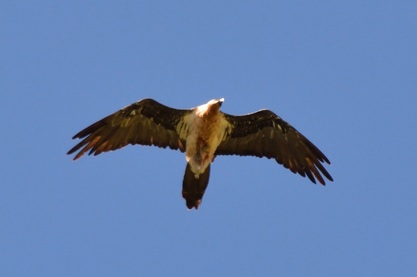 Photo by Bruce Hyde
Photo by Bruce Hyde With its wingspan of up to nine feet, and long, diamond-shaped tail, the lammergeier (bearded vulture) is huge and magnificent, but very rare in much of Europe. We only have a handful of this protected species in the Mediterranean Pyrenees, and I've been lucky enough to see one or two on various outings in past years.
On 25th November, when I set off from home in the dark at 6.30am, I hoped my luck would hold. At 7.30 I met Gilles - fellow GOR member - and transferred my gear to his 4x4, after which we headed deeper into the hills for another half hour or so. We would be one of several teams that day, spread across Canigou and other mountains in the region, tasked with simultaneous sitting, watching and recording of sightings between 10am and 4pm. Of course, none of us could guarantee that lammergeiers would turn up, any more than we could guarantee the weather.
Gilles and I were in optimistic mood, however, because the weather forecast, at least, was good. As we shouldered rucksacks and extended walking poles, the skies were clear; there was no wind and only a small chance of rain. It was 4°C where we'd parked - already 1,000m above sea level - and Gilles, familiar with the area, estimated it would take us two hours to climb another 600m, through beech and conifer woods, to our allocated observation post. 'We'll take it slowly,' he said. This was a relief because by now I knew that although he was a few years older than me, he was a keen walker and cross-country skier, who had climbed Canigou twice this year already. I, on the other hand, hadn't tackled anything this tough for a long time, and wasn't at all sure how lungs and knees would cope.
Rain earlier in the week had left the ground very damp. A thick layer of wet beech leaves on top of greasy stones and tree roots made the first section treacherous enough. It was important to watch every step and not get distracted by pretty views of autumn colours against a backdrop of snow on Canigou's upper slopes. Accompanied at first by nuthatches and a green woodpecker, we crossed a fast flowing brook and continued up. Gilles led and, true to his word, didn't walk especially fast, but nor did he stop, except to check his GPS gizmo once in a while. Despite long zigzags, the track was still very steep in places and utterly relentless, never flattening out.
The higher we climbed the colder it got, of course. In a sense this was no problem - gloves and woolly hat were soon stuffed into pockets - but every so often we had to cross rock fields several metres wide. Although the lichen-spotted stones weren't as small and unstable as scree, at this height they weren't just damp, they were lethally slippery with frost. Given the potential for twisting an ankle, or hurtling down the slope to one's death, this was no time to hurry. Not that I was capable of hurrying. My knees were fine, lungs less so, but I hadn't envisaged that my specs would steam up, making it even harder to focus on exactly where I was putting my feet. The hotter I got, the more they steamed up, and cleaning them with increasingly damp tissues ceased to work. Further on, it became unsettling too, to hear my own (rapid) heartbeat. In the end I had to keep stopping for a few seconds and let Gilles plod on, though never out of sight.
I had nearly lost the will to live when he paused to check the GPS. 'Only about another 30m to go,' he said when I caught up again. Feeling sick and wobbly legged, with sweat dripping from nose and glasses, I managed a smile and steeled myself for a final push. A few minutes later I thought he'd miscalculated, until I realised he meant 30m up. It must have been closer to 300m in overall distance, which felt like a lifetime.
But I made it! On the metaphorical stroke of ten, I emerged to join him in a sunny glade in which stood a small wooden refuge. Next to that, a frosty picnic table, from which steam was gently rising. So picturesque; such bliss to stand still, peel off my rucksack and scrabble for an emergency chocolate bar. Almost frozen, it nearly broke my teeth on the first bite. And when my stomach lurched in rebellion, I decided to leave the rest till later. Gilles, meanwhile, looked as fresh as a chamois and wasn't even out of breath.
He pointed out that we couldn't see much from here, except trees, and I reluctantly had to agree that, as observation posts went, it wasn't ideal. In fact, our instructions suggested we position ourselves a little further back down the track, but we already knew that wouldn't be much better. In the end we did retreat about 50m, to the last rocky bit, which gave us a half-decent view of the valley, and even the sea in the very far distance.
This being the north side of the mountain, though, it was in the shade and, added to the frost, there were tiny remnants of snow from the recent rains. All the perspiration that had soaked through every layer of my clothing was now efficiently and rapidly cooling me down. Time to pull on the thermal waterproof trousers and add a fourth layer to my top half. Gilles put another coat over his ski jacket. A warming cup of coffee staved off the shivers while my hair dried out. Then it was back on with the woolly hat, swiftly followed by jacket hood. Hands needed inner gloves and ski gloves. But, dammit, one of my ski gloves must have fallen out of my pocket (we would find it later, on the way back). Never mind. It could have been worse: could have been windy. We would have been facing straight into a tramontane. And the prospect of enduring this for the next six hours wasn't so bad when I thought that a lammergeier might fly up or down the valley at any minute! Failing that, a griffon vulture or golden eagle. Peregrine falcon? Kestrel?
Now we wished for a breeze to disperse it, but no such luck. For a couple of hours or so the mist teased us, lifting just enough here and there to give brief, tantalising glimpses of mountainside and valley. Eventually I surprised myself by suggesting we change position, to a point beyond the refuge, where the map suggested there might be better views - if we could escape the cloud. I couldn't have faced more uphill, but we would be following a contour. We paced it out and the movement proved most welcome. It was easy underfoot - a lovely stroll in comparison with earlier - and after fifteen minutes or so we came upon another rocky area with a very different vista.
The sense of achievement from getting up and down without expiring also made the day worthwhile. It didn't really matter that we saw no lammergeiers (or indeed any other raptor). Hopefully some of the other teams did, and analysis of records will help ongoing protection efforts by local groups. As I drove back home in the dark, twelve hours after setting out, I kept thinking that our lack of success, despite sitting still for hours, shows how incredibly lucky I've been in the past. It makes each sighting of these rare and extraordinary vultures all the more special - never to be forgotten.
